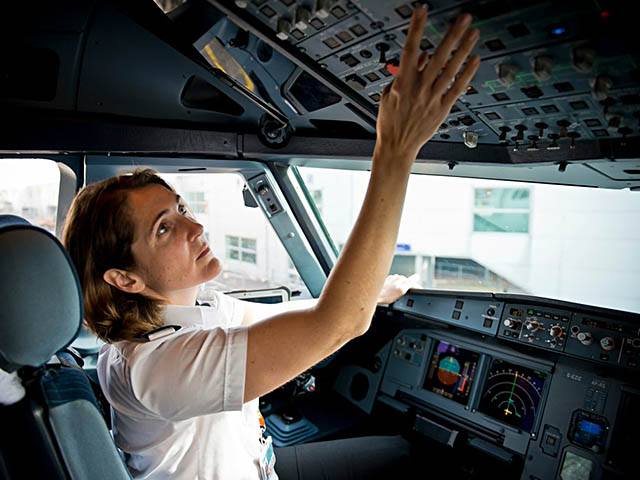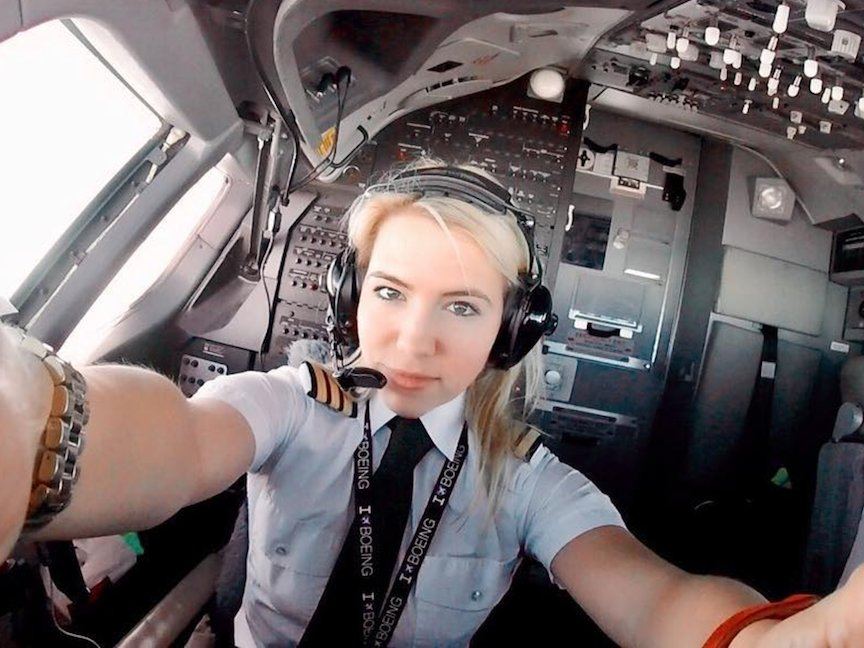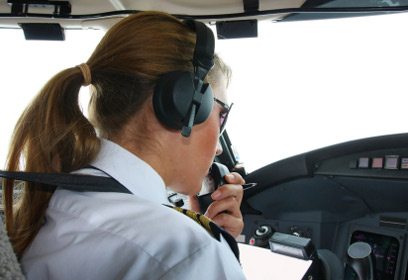The stereotype of the airline pilot, necessarily a man, sometimes a hero, has a hard life: in the cockpits the women remain rare, a situation all the more crying as the shortage of pilots threatens.
 Only 3% of commercial pilots worldwide are women, according to the International Civil Aviation Organization (ICAO)
Only 3% of commercial pilots worldwide are women, according to the International Civil Aviation Organization (ICAO)
If women pass the selection process at the school entrance as well as men, they are much less likely to apply.
For decades, women’s pilot associations have been working to encourage women to break the glass ceiling and feminize the craft.
But for the moment, and while the sector is more buoyant than ever, these efforts remain almost a dead letter. Women’s reduced attraction for scientific and technical subjects, difficulties in leading a family and professional life at the same time due to complicated working hours, the influence of education where in a sibling it is the boy who will be pushed to do expensive studies, the image of the virile pilot conveyed by cinema or advertising, are as many conscious or unconscious obstacles to a feminisation of the profession.
Last November, ICAO estimated that by 2036, the « global network will need some 620,000 pilots, at least 80% of whom will be at the beginning of their careers » due to the ageing of the profession and an annual growth in global air traffic of 4 to 5% which will double the number of passengers in 15 to 20 years.
The organisation seeks to « promote aviation more actively » among young people « and especially young girls ». « Today with this enormous shortage of pilots manifesting itself », the fact of « not being able to interest the young girls » will weigh even more, underlines Liz Jennings Clark, 55 years old, pilot at Transavia Holland and member of the International society of women airline pilots, created in the United States in 1978.
Air France, which counts between 7 and 8% women among its pilots, has experienced this in its recent recruitment of a hundred « cadets ». Of the 4,300 candidates registered, only 13% were women. However, the company had chosen to extend its recruitment field to business schools, for example, in search of more diversity.
 Lack of models
Lack of models
While sexist comments were common on airplanes in the early 1980s, they are now rare, says Jennings Clark. But it still happens that when she greets the passengers at the exit of the plane, some stick in her hands their detritus convinced that it is about a stewardess of the air, in spite of her uniform of pilot. Very often, « we are shown the image of a male pilot and a female flight attendant. This could send the message back to the young girls that if they wanted to work in aviation, it couldn’t be as a pilot, » said the British pilots’ organisation Balpa recently.
In the image of the admiration aroused in 2009 by the forced and heroic landing on the Hudson River by Chesley Sullenberger known as « Sully », Liz Jennings Clark hopes that the feat achieved in April by a female captain, Tammie Jo Shults, serves as a catalyst for young girls who doubt their legitimacy in a cockpit. At the controls of a Southwest Airlines Boeing 737, Ms. Shults had successfully completed an emergency landing following an engine explosion. For Sophie Coppin, head of society at the Ecole nationale de l’aviation civile (Enac), young girls « lack role models ». « There is conscious or unconscious censorship » on their part for which society as a whole, including parents and teachers, is responsible, she believes.
 The low-cost airline easyJet, which counts 6% women among its pilots, has set itself the objective of recruiting 20% women in 2020 and, as proof of its commitment, landed a brand new A321neo with a 100% female crew on the tarmac of the Farnborough Air Show. « What we want is to create models for future generations, » commented easyJet CEO Johan Lundgren.
The low-cost airline easyJet, which counts 6% women among its pilots, has set itself the objective of recruiting 20% women in 2020 and, as proof of its commitment, landed a brand new A321neo with a 100% female crew on the tarmac of the Farnborough Air Show. « What we want is to create models for future generations, » commented easyJet CEO Johan Lundgren.